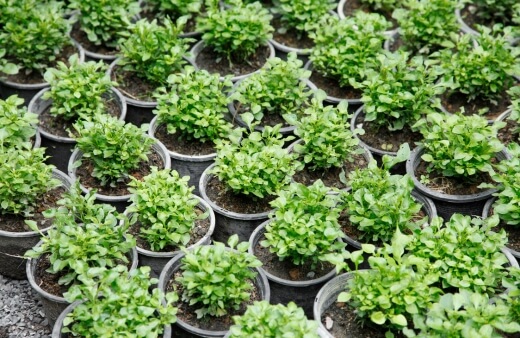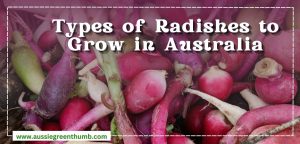Watercress is one of those herbs that has been around forever, and still transforms dishes both modern and traditional. I would definitely recommend adding watercress to any herb garden.
Our guide shares some history about watercress, advice on how to propagate from cuttings and seed, tips to keep your watercress alive and happy, and info about this herb from a culinary perspective.
More...

Family: | Brassicaceae |
|---|---|
Genus: | Nasturtium |
Species: | N. officinale |
Origin: | Europe and Asia |
Common Names: | Watercress |
Location: | Indoor and outdoor |
Type: | Herb |
Growth: | Up to 15 cm tall and wide |
Sun requirements: | Sunny/part shade |
Foliage Colour: | Green |
Flower Colour: | Green and white |
Flowering: | Summer |
Fruit: | Small green pods with edible seeds |
Maintenance level: | Low |
Poisonous for pets: | No |
Introducing Watercress
Watercress has a rich history. The Ancient Romans believed that eating the plant could help heal mental illness. It was eaten by Native Americans, who believed it could cure kidney problems and constipation.
Watercress or Nasturtium officinale, is native to Europe and Asia. As far as leafy vegetables go, humans have been eating watercress for ages. It’s grown all over the world and usually known as a vegetable or herb, although in some places watercress is considered a weed.
You can eat all parts of the plant raw, stems, leaves and all. Being 95% water, watercress contains substantial amounts of vitamins K, A, C and B6, along with calcium and riboflavin.
The best way to preserve the goodness of watercress for eating is to steam or microwave it rather than boiling.
How to Grow Watercress in Australia

Best Conditions to Planting Watercress
Sunlight
Watercress likes sun or partial shade in order to grow. It does not enjoy full or direct sunlight. If you think about its natural environment, you would usually find watercress growing in cool and sheltered places.
If you are growing watercress indoors, choose a shady spot. As a guideline, you can aim for around 4 hours of sun at the start of the day, and then shade in the afternoon.
Soil
When it comes to growing watercress, you won’t need potting or garden soil. It will do best in a mixture like vermiculite or perlite. You can also add peat which helps the mix to retain water.
Temperature
Watercress prefers cooler temperatures and heat can affect the flavour of the leaves. In nature, they are generally found in cooler conditions and a temperature between 10 and 15°C is the ideal.
Propagating Watercress

How to Propagate Watercress Using Cuttings
You can select and take your cutting from an existing watercress plant or just buy some from the shop to use for propagation. Place the cut end of the stem in a container of water and leave it to grow roots.
When the roots are at least 2.5cm in length, you can plant them in pots using an appropriate growing mixture that’s been watered.
Watercress Propagation Using Seeds
Fill your container with moist potting mix and then sprinkle the watercress seeds over the top. Cover them just slightly with a thin layer of soil. Put the container somewhere that maintains a temperature between 10 and 15°C and make sure the soil always remains moist.
When the seedlings reach a few centimetres in height, you can then transplant them and can start harvesting your watercress when the seedlings are around 3 to 4 weeks old.


Get Your Free Guide:
Master Growing Australian Natives eBook
A Must Have Complete Guide for Every Australian Garden
Get Your Free Guide:
Master Growing Australian Natives eBook
A Must Have Complete Guide for Every Australian Garden
How to Care for Watercress
Watering
When we think about watercress in nature, you are most likely to find it somewhere with slow moving water and forming some kind of carpet on top of the water. The roots of the watercress like to be waterlogged, and their preference is more alkaline water.
Fertiliser
You can use a water soluble fertiliser every now and then to feed your watercress plant. It’s safe to go with about half the quantity recommended on the product label. First mix the fertiliser with water and then you can add it to the growing container.
Pruning
You can prune your watercress occasionally, leaving a height of around 10 cm. This helps the plant to grow full and bushy. You can even do the pruning by hand.
Watercress Culinary Uses

Watercress could best be described as both peppery and spicy, with a bit of a tang and slightly bitter note. You are most likely to pick up the bitter flavour in older watercress leaves, and if you cook watercress, you lose some of the spiciness.
Generally, watercress is enjoyed as part of a salad but can be used in a variety of dishes if you are looking for a mild pepper taste. The best leaves to select are those with a deep green colour that are also crisp and don’t look wilted. Watercress is best stored in the fridge and you’ll need to use it within a few days.
There are many ways to incorporate watercress into your diet to enjoy the health benefits. It works well with eggs or in a pasta sauce. You can use it to make pesto or a smoothie, or add a few leaves to a hearty soup. Or just keep it simple and add some watercress to a wrap or sandwich.
Nasturtium officinale Pests and Diseases
Watercress doesn’t struggle much with disease. When it comes to garden pests, you’ll need to be on the lookout for white flies, spider mites and snails. White flies are often found on the underside of the leaves.
You can get rid of them using a soapy water spray or wiping down the leaves. If you need something stronger, you can opt for an insecticidal soap. Since snails are easy to spot, you can just pick them off the leaves.
In the case of an aphid infestation, you can rinse the leaves with a strong spray of water, and perhaps follow up with an application of neem oil to control future populations.
Watercress Frequently Asked Questions

Why are the leaves of my watercress yellow?
If the leaves of your plant are yellow, the first thing to check is if your watercress has enough water. Yellowing leaves can also indicate a problem with the roots. Pests or a lack of oxygen can cause the roots to die.
What is the earliest historical evidence of watercress?
Watercress features historically started in 400 BC and its earliest use was among the Persians, Greeks and Romans. Hippocrates started the first hospital on the Island of Kos in 400 BC. He grew watercress in the surrounding springs and would use it to treat blood ailments.
Watercress is one of those herbs or vegetables that is known the world over and the actual word “watercress” has been translated into 34 different languages.
When did watercress start being used as a culinary item?
Before the renaissance, watercress was used to freshen breath and as a palate cleanser. The Persian King Xerxes gave his soldiers watercress to stay healthy, but it was also eaten to prevent and cure scurvy.
Is watercress really a good cure for a hangover?
If you are willing to eat a whole bag of watercress, it is said to be a hangover helper.
What gives watercress its distinct taste?
Plants belonging to the mustard family, including watercress, have a spicy and pepper taste that is activated by the process of chewing the plant and is a kind of defence mechanism.
Why is watercress so good for you?
Watercress contains twice as much Vitamin C as an orange.
In need of more garden inspiration? Sign up to our newsletter for tips and advice.
Wrapping Up Our Watercress guide
If you’re looking to add to your herb garden, watercress is a delicious option that also has great health benefits. You can grow it quite easily, and then enjoy harvesting it throughout the year as needed to add a peppery flavour to your meals.
Published on April 13, 2023 by Maisie Blevins
Last Updated on February 25, 2025




